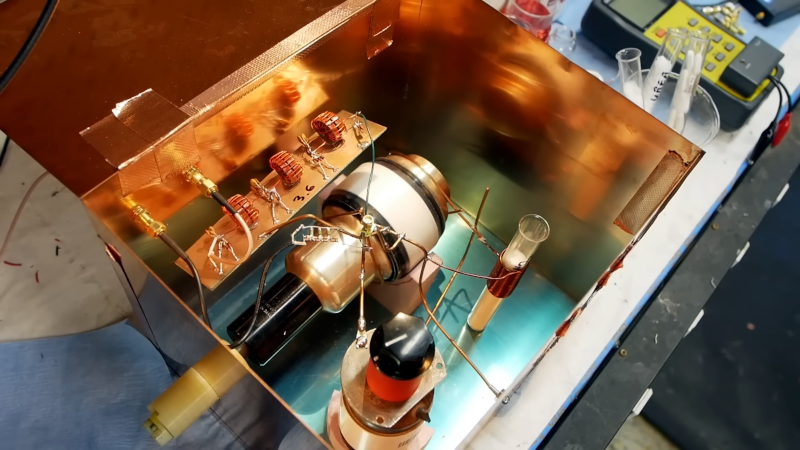
Spectrometry is a well-known technique or, more correctly, a set of techniques. We usually think of it as the analysis of light to determine what chemicals are producing it. For example, you can tell what elements are in a star or an incandescent based on the spectrum of light they emit. But you can also do spectroscopy with other ranges of electromagnetic radiation. [Applied Science] shows how to make an RF spectroscope. You can see the video below.
An oscilloscope-resident function generator creates a signal that he feeds to an amplifier because you need a fair amount of power going out. However, you also need to sense a very tiny amount of power coming back, and that requires a special circuit that will block high-power signals while passing low-level signals.
Because of the low level of signals involved, you do need some special RF techniques. You also need a way to read back the spectrum. Turns out a NanoVNA works fine for this application. The actual science behind this is the same idea as what happens with nuclear resonance imaging. The end of the video has a detailed explanation of what makes it work.
Of course, this machine doesn’t do the image part. But we’ve seen an attempt to do just that, too. There are many different kinds of spectroscopes. There are ones that use a laser and Raman scattering, and some that just light things up with a laser.
No comments:
Post a Comment